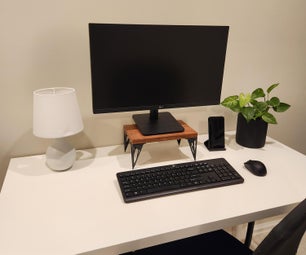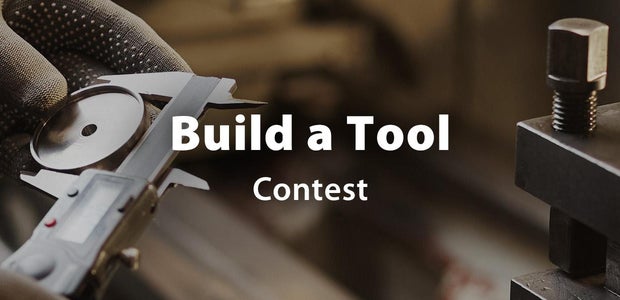Introduction: Power Tool Racer. Quick & on the Cheap!
The 2nd annual Seattle area Power Tool Race & Derby is just around the corner and race-tool kludgineering is in the air! Folks are building racing machines out of leaf blowers, grinders, vacuum cleaners, drills, and of course circular saws.
This instructable is meant to share just how quick and sloppy simple it can be to build a racer from a circular saw and stuff you likely have kicking around your garage. To construct such a racer you need only some old skates, scraps of wood, screws, bolts, a drill, and of course a circular saw.
The 2007 Seattle Power Tool Race & Derby is June 23rd.
Go here if you are interested in information and rules: Power Tool Race & Derby
If you enjoy this instructable and would like to join us at HazardFactory for one of our Saturday Build Days please contact me (jeremy at lowly.org)! We're happy to help you get your tools race ready!
Step 1: Collect Materials
This can really be built from 100% scrap. In my case though I went out and bought a pair of skates and some tub/shower door rollers. In total I spent $12. If you had to buy the wood, saw, and everything you might be able to spend $50 bucks on this project.
Bill Of Materials:
- In Line Skates (8 bucks)
- Scraps of Plywood
- Scraps of 2x2 or 2x4
- Tub/Shower Roller (3 bucks)
- Screws
- Bolts
- Stiff wire or a Zip Tie
- Circular Saw
- Drill
- Circular Saw (the same one!)
Step 2: Harvest Wheel Units From Skates
I like to use the entire wheel unit from each shoe, as it simplifies assembly.
In line skates have been evolving for 2 decades... your skates will likely be different than mine. How easy/hard it is to harvest the wheel unit is something to consider if your going hunting at garage sales.
If you have skates with the wheel unit riveted to the shoe, you'll have to drill out the rivets.
- Use your drill with small bit to make a centered divot in each of the rivet heads.
- Switch to a larger bit to drill the heads off each of the rivets.
Step 3: Assemble Front Wheel Platform
A rear mounted engine (ahem... circular saw) is one approach which puts most of the weight of the racer over the drive wheel (ahem... blade) for maximum friction.
With that goal in mind we're going to construct the front freewheel platform first.
Cut Two Cross Pieces to About 11.25 inches.
The track dimensions for the Seattle race is 12 inches from rail to rail. I like to have a little over a 1/4 inch clearance on each side to prevent the racing machine from wedging itself.
Align wheel units
This step is best done with the whole platform upside down
- Measure front width between wheel units
- Measure back width between wheel units
- Adjust and repeat until wheels are in parallel
Don't add too many screws until you've tested for track fit!
- Using a few screws attach, doing your best not to misalign the pieces.
You can mock up a track by placing two 2x4s in parallel 1 foot apart.
- Place in track
- Inspect from all angles for binding
- Roll back and forth
Add s'more screws so it'll keep shape!
Step 4: Add the Rear Drive (Saw) Platform
Cut 2x2 offset pieces
Take your trusty circular saw and cut some pieces that will be used to attach your rear platform to your front platform. In my example I've cut two 1 foot long pieces and two 3 inch long pieces, as you can see in the picture.
Cut rear platform
I've cut a rear platform of plywood. Dimensions are about 2 foot by 6 inches. The rear platform will fit under the front platform and extend out 1 foot behind it.
Attach offset pieces to rear platform
This step is best done with the racer upside down.
- Make sure your offset pieces are aligned well with your front platform.
- Place your rear platform on the offset pieces
- Attach with liberal use of screws
This step is best done with the racer right side up. It's advised that you rest it on 2x4s so that the offset pieces are snug in place where they are supposed to be.
- Align so that rear platform extends back about 1 foot.
- Attach with liberal use of screws.
Step 5: Mounting the Saw
Drill holes in saw base
I haven't mentioned yet that I intend to use my saw again after the race. Totally plausible. I've selected my mount points carefully to avoid damaging the saw's metal base.
- Mark holes, consider what's on the top side.
- Drill holes, usually best to drill a smaller pilot hole before the final hole.
Yo! Heres a hotTIP:most saws need to be mounted backwards to make the racer move forwards! Crazy, huh?
- Transfer hole alignment marks to the rear platform with a sharpie.
- Drill holes.
Attach securely using bolts, nuts, and washers.
Step 6: Add Side Rollers
Round Corners
- Cut the corners off the front.
Mount your side rollers toward the front. You should have a means to adjust them once in place.
I've opted to modify my shower door rollers to bend the bracket into a bit of a right angle and attach them to the wheel units.
Step 7: Add Cruise Control
In the Seattle Power Tool Race you'll get a foot switch to active your racer. But it's not going anywhere if you don't add some cruise control technology.
Take that stiff bit of wire or a zip tie and convince the trigger button to stay depressed!
Step 8: Final Fit
Lower Blade
Use the depth adjust on the saw to find the sweet spot where the blade makes solid contact with the track.
Bend Side Rollers
I make my final adjustments with a pair of vice grips to convince the roller wheels line up just shy of binding.
- Fit in track
- Roll forward
- Adjust rollers and repeat until minimal friction occurs rolling forward.
Step 9: Name and Decorate
Pick a Great Name
Imagine sexy bombastic announcers calling out the name of your racer. Imagine a crowd rooting for you. Now pick a name that they'll be embarrassed to say aloud!
Decorate
Honestly your racer doesn't have to move an inch for you to walk home with a trophy. Fantastic imagination in the decoration department can just as easily secure a prize as fantastic engineering.
Of course you'll probably have to do better in decorating than stapling a glove to your racer... but you get the idea.
2007 Seattle Power Tool Race
June 23rd.
Races 2:30 - 7:30
Derby 7:30 - ?
I hope you've enjoyed this instructable and will be joining us for the race!
Here's a video from a photo shoot we did with popular science magazine featuring some other racers:
Thanks,
Spacematters











